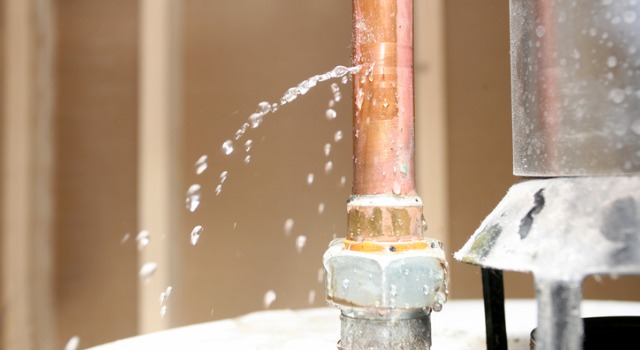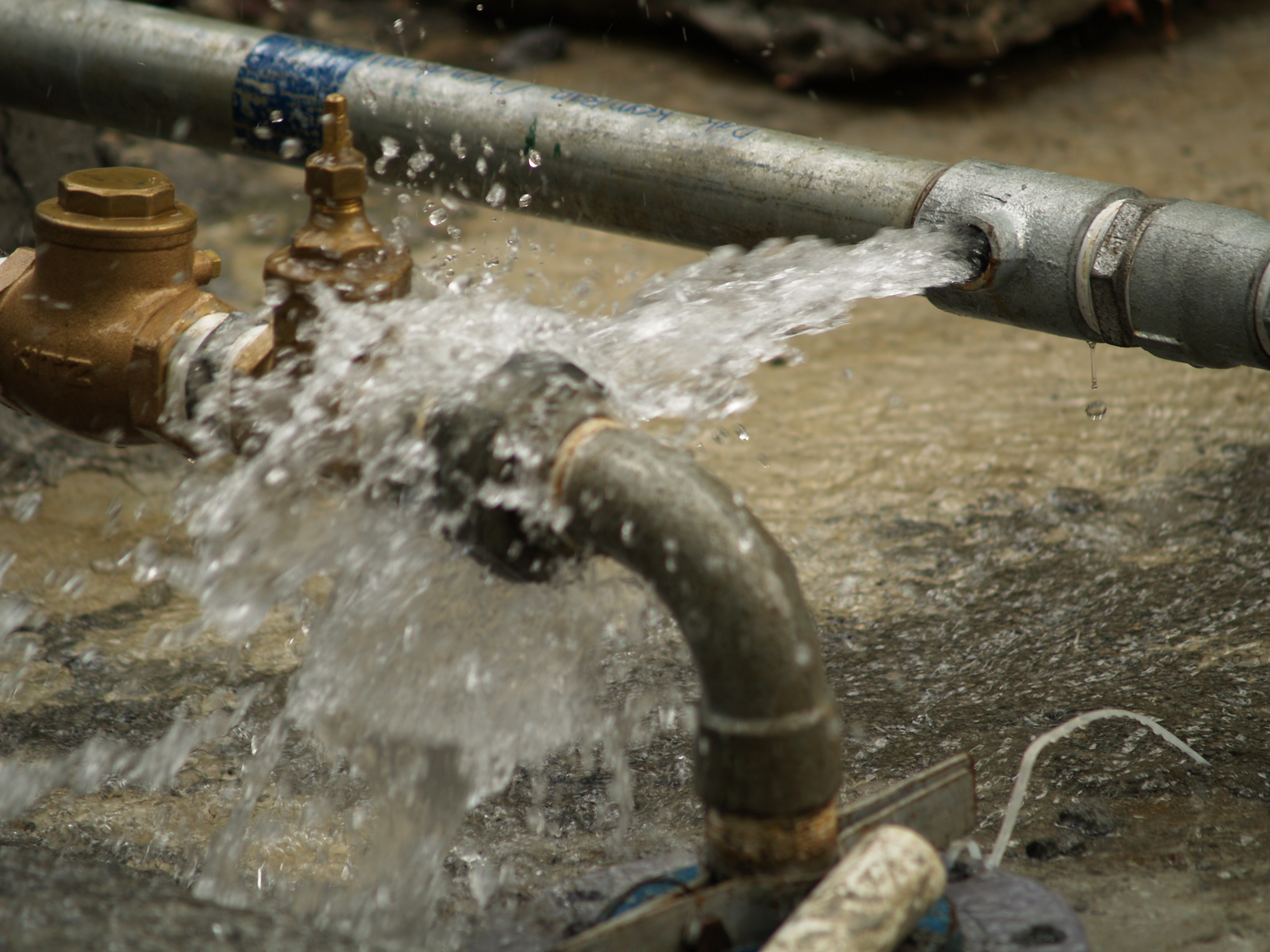Quick Guide: Identifying and Fixing Ruptured Pipes in Your Home
Quick Guide: Identifying and Fixing Ruptured Pipes in Your Home
Blog Article
Every person will have their private conception on the subject of How to Install and Connect a New Dishwasher.

A ruptured pipe is a major emergency; you can only stand as you view water you pay dearly to reunite with the earth. In even worse instances, you discover a pool on your cooking area flooring, which is a terrific trip threat, particularly if you have kids around. If the pipe that ruptured remained in your walls, bad news: you may need to repaint that whole area.
Just how can a catastrophe like a burst pipe be prevented and taken care of? Well, by paying attention to your expert emergency plumbings and adhering to these guidelines.
Just how do I understand when my pipes have ruptured?
Changing water pressures
Pipelines do not just burst in a day. You might have observed that your kitchen tap or shower does not run immediately when you transform the tap. It may pause for a couple of seconds and then blast you with even more pressure than typical.
In other circumstances, the water may seem regular initially, then decrease in stress after a few secs.
Wet wall surfaces as well as water stains
Prior to a pipeline bursts, it will certainly leak, most times. If this relentless leaking goes unnoticed, the leakage may finish into a wide wound in your pipe. One easy means to avoid this emergency is to keep an eye out for damp walls advertisement water stains. These water discolorations will lead you right to the leak.
Puddles under pipelines and sinks
When a pipeline bursts, the discharge develops a pool. It may show up that the puddle is expanding in dimension, and regardless of how many times you wipe the puddle, in a couple of minutes, there's an additional one waiting to be cleaned. Usually, you may not have the ability to trace the pool to any noticeable pipes. This is a sign to call a specialist plumber.
Untraceable dripping sounds
Pipe ruptureds can happen in one of the most undesirable locations, like within concrete, inside wall surfaces, or under sinks. When the house goes quiet, you may have the ability to listen to an irritatingly relentless dripping noise. Also after you've inspected your shower head and kitchen area faucet, the dripping might proceed.
Precious visitor, the trickling may be originating from a pipeline inside your walls. There isn't much you can do concerning that, except tell a specialist plumber.
Shut off the Water
When water freezes, it increases in volume by regarding 9 percent. And also it expands with remarkable pressure: The stress inside pipes may go from 40 extra pounds per square inch to 40,000 psi! No pipe can hold that much pressure, so it bursts. The break might occur where the ice types, yet regularly, it occurs where water pressure locates a weak point in the pipe. That may be inches or perhaps feet from the icy area. Discover the water shutoff valve as well as switch off the water to prevent more damage. You may additionally need to shut off the electrical energy too, relying on where the leaks occurs as well as exactly how large it is.
Infected water
Many people assume a burst pipeline is a one-way electrical outlet. Fairly the contrary. As water spurts of the hole or gouge in your plumbing system, pollutants discover their method.
Your water might be infected from the resource, so if you can, examine if your water tank has any problems. Nevertheless, if your drinking water is provided and purified by the city government, you ought to call your plumber right away if you see or scent anything amusing in your water.
What do I do when I identify a ruptured pipeline?
Your water meter will certainly remain to run also while your water wastes. To lessen your losses, discover the primary controls as well as transform the supply off. The water mains are an above-ground structure at the edge of your residential property.
How to Fix & Detect a Leaking Pipe
How Do I Know if a Pipe is Leaking?
Leak detection tests can help you determine if your pipe has a leak. Even if you don’t see an apparent leak, you should still conduct leak detection tests regularly to save water and money—and prevent major damage to your home.
Water meter. It can be helpful to figure out what your usual water meter usage numbers are and then monitor them regularly. To monitor your meter, first, turn off all water faucets in your home. Check the meter and write down the numbers. In a few hours, check the meter again. If the numbers have changed, you have a leak. Water gauge. Use a water gauge to test your water pressure. Your showerhead should produce a certain amount of water pressure based on its model and design. If the pressure is lower than it is supposed to be for that specific showerhead, your home likely has a leak. Puddles. Look inside your bathroom, laundry, and kitchen sink cabinets. Puddles around the cabinets or around toilets, tubs, showers, and washing machines indicate the presence of a leaking pipe. You may also notice loose tiles, peeling or flaking paint, or mold caused by water accumulation. Napkin test. Even if you don’t see any puddles, you may still have a leak. You can test for water leaks in the bathroom, laundry, and kitchen by wiping below-sink connections with a napkin, paper towel, or piece of toilet paper. If it becomes damp, you probably have a leaking pipe under the sink. Discolored walls. Walls that are discolored—usually with brown or yellow stains—or bulging might mean that they have been impacted by water damage caused by a leaking pipe. Smell. A leaky pipe will create sitting water, and over time, that water may develop a musty smell. If your home smells musty, but you can’t locate the source, it may be due to a leak. Steps for Fixing a Leaking Pipe
A leaky drain can be remedied by tightening the pipe base, replacing the drain seal, caulking the rim, and tightening the pipe nut. Similarly, a leaking toilet pipe can be treated by tightening the packing nut. You may also need to replace the valve. A leaky faucet may just need tightening or replacement of the washers. If that doesn’t work, consider replacing your faucet. If your pipe has a hole in it, you may want to use a pipe leak sealer or pipe leak tape. This quick fix for water pipe leaks can also temporarily fix a copper pipe leak. https://www.ahs.com/home-matters/quick-tips/how-to-tell-if-pipes-are-leaking/

I hope you enjoyed our topic about What to Know Before Installing a Dishwasher. Thank you so much for finding the time to browse our blog post. Kindly take a moment to distribute this blog entry if you appreciated it. Thanks a lot for going through it.
Visit My Web Page
Report this page